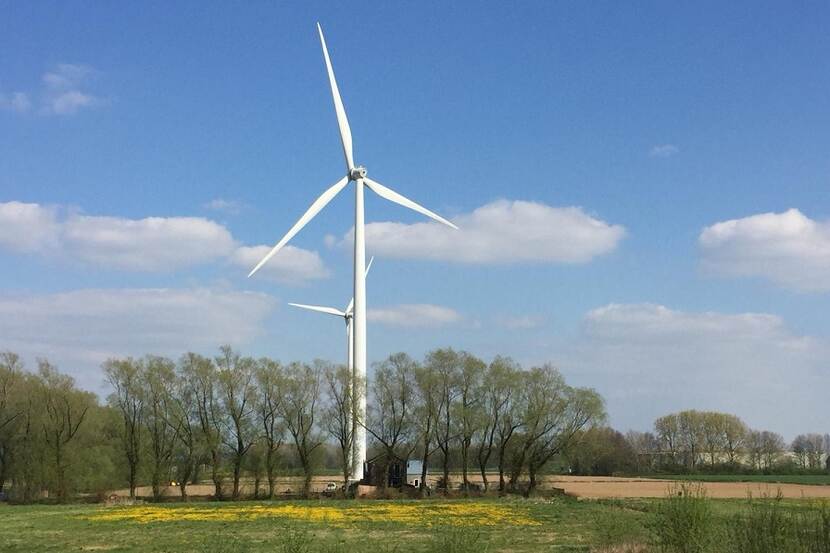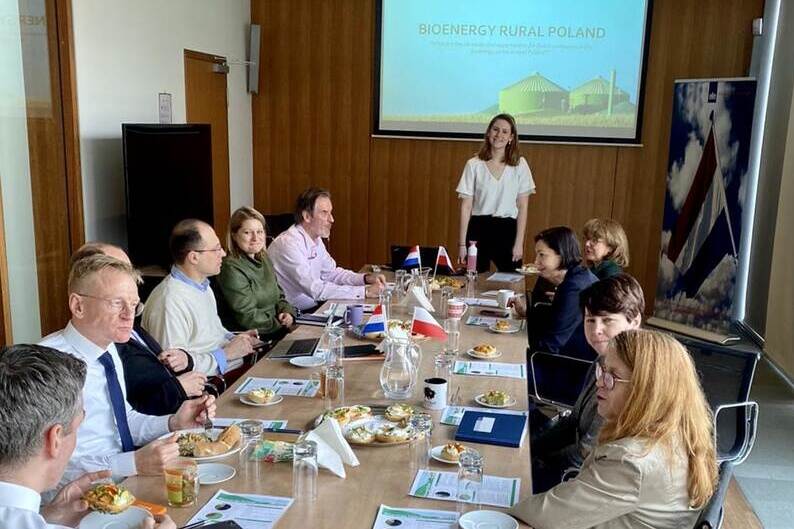Poland: outline energy policy untill 2040
On 8 September, the Polish Ministry of Climate submitted the draft of the Polish Energy Policy for further work in the government. In 2040, 11% of electricity is to come from coal. The system will be based on nuclear blocks and offshore windmills, and investments in this area will cost PLN 280 bln (approx € 63 bln).
In rural areas a departure from heating based on solid fuels by 2040 is foreseen. At the same time, investments in biogas plants are promoted, with raw materials available in the countryside. Processing the agricultural biomass available in the Polish countryside would allow for the production of almost 8 bln cubic meters of biogas annually.

The document sets out two scenarios for the Polish energy sector - for a slower and for a fast increase in the cost of CO2 emissions. - The first one was created in 2018 and today it seems unrealistic due to the dynamic increase in the prices of CO2 emission allowances. So we follow the path marked by the second scenario, although eventually we may find ourselves somewhere between the designated brackets - explains the Minister of Climate.
Both scenarios differ mainly in the share of coal in electricity production. According to the latter, more realistic path, taking into account the high costs of CO2 emissions, by 2030 the share of coal will reach 37%, and in 2040 only 11%. The first scenario, identical to the previous version of the strategy, assumes achieving 56% share of coal in 2030 and 28% in 2040. Today, more than 70% of coal is used in Poland for electric energy. For the transformation of mining regions, Poland is to obtain PLN 60 billion (approx € 13,5 bln) from European funds.
At the same time, an alternative, zero-emission energy system is to be created, which will gradually replace coal and gas power plants. The basis for the new system is to be offshore wind energy and nuclear energy. The document provides that in 2040 we will have about 8-11 GW of installed capacity in offshore windmills, and investments in this area will reach PLN 130 billion (approx € 29 bln. At the same time, Poland is to have units with a total capacity of 6 - 9 GW installed in nuclear power plants, for which approximately PLN 150 billion will be allocated. The first nuclear unit with a capacity of 1 - 1.6 GW will be launched in 2033, the next ones will be put into operation every 2 - 3 years.
Want to know all about the current situation of the bioenergy sector in Poland? Below you can find the links to a factsheet and extensive research.
The goal is to obtain at least 23% the share of RES in the final gross energy consumption in 2030 (in the plan sent on 30 December 2019 to the European Commission, Poland declared the share of RES at the level of 21 – 23%). This will translate into a 32% share of green installations in the production of electricity. Offshore wind energy (approx. 5.9 GW by 2030), photovoltaics (5 - 7 GW) and onshore wind farms (8 - 10 GW) are to play a special role here. In heating, the share of renewable energy sources is to reach 28%, to which the use of biomass, heat pumps, biogas and geothermal energy will contribute, and 14% in transport. From 2025, new public transport vehicles will be electric only. However, from 2030, all public transport vehicles are to be zero-emission.
Moreover, the document provides for the complete withdrawal of coal from use in individual heating by 2030 in cities and by 2040 in rural areas. At the same time, the project assumes that the development of renewable energy and nuclear energy will bring 300,000 new jobs.
The draft of the Polish Energy Policy until 2040 assumes a departure from heating based on solid fuels in cities by 2030, and in rural areas - by 2040.
"During this time, we should build distributed energy, prosumer energy, based on renewable energy sources, supplemented with energy storage that will ensure the stability of these renewable sources" - said Ireneusz Zyska, the deputy minister of climate, during one of the debates of the Economic Forum in Karpacz.
As he informed, the Ministry of Climate is working on a draft amendment to the Act on renewable energy sources. It includes - as he said - to strengthen the operation of energy clusters to make them more market-oriented, and at the same time to ensure stability of energy supplies to cluster members. Zyska also praised the regulations enabling the creation of energy cooperatives, encouraging their development.

Development biogas plants
Additionally, Jan Krzysztof Ardanowski, Minister of Agriculture and Rural Development, pointed out in Karpacz that development of the biogas plant program in the rural areas may become a source of additional funds for their inhabitants.
Processing the agricultural biomass available in the Polish countryside would allow for the production of almost 8 billion cubic meters of biogas annually. In the opinion of the minister, by processing biomass in biogas plants, rural areas and agriculture can become part of the construction plan in Poland of the so-called large-scale distributed energy. At present, Ardanowski recalled, there are just over a hundred biogas plants operating in Poland, processing waste from agricultural production.
Biogas plants should be built - as Ardanowski said - on both public and private land. The Ministry of Agriculture wants to participate in the work on changes to the regulations in order to strengthen this type of investment. These are biogas plants with gas purification installations, producing biomethane for the needs of gas networks, and not - as is usually the case today - only for the production of electricity and heat. PGNiG (Polish largest gas and oil company) is interested in biomethane for the needs of the network and transport.
However, Ardanowski made a reservation that the development of a biogas plant program in the countryside requires capital support.
- The rural areas have amazing resources, useful for renewable energy sources, but no money. If we solve this problem, energy distributed in rural areas will be an important source of energy for our country - said the head of the Ministry of Agriculture, pointing to domestic and EU sources of financing for such projects.
In addition to biogas plants, the so-called small wind energy and photovoltaics, Ardanowski also encouraged in Karpacz to develop - as he put it - "collective prosumerness" by establishing energy cooperatives and energy clusters, which - free from transmission fees - could supply local communities with cheap electricity.
Source: farmer.pl, rp.pl
Overview of the bioenergy sector in Poland
Did you know that Poland has one of the highest biomass potentials in the EU? During her internship Marisa Groenestege researched the bioenergy sector in Poland to see what the opportunities and obstacles are for NL companies in the bioenergy sector in rural Poland.